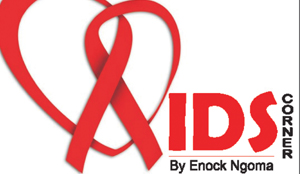 A few weeks ago, I was invited to give a talk on HIV Reporting to Livingstone and Choma based journalists in Livingstone under the auspices of the Livingstone Press Club at a one day workshop organised by a non-governmental organisation dealing in HIV/AIDS called MARCH Zambia.
A few weeks ago, I was invited to give a talk on HIV Reporting to Livingstone and Choma based journalists in Livingstone under the auspices of the Livingstone Press Club at a one day workshop organised by a non-governmental organisation dealing in HIV/AIDS called MARCH Zambia.
MARCH Zambia executive director Mwendalubi Maumbi told the participants that as journalists, their articles on HIV/AIDS related issues must influence attitudes and bring about change of perspectives
surrounding the pandemic because the harrowing statistics of experts provided on the rates of infection are real.
I was particularly happy that during the same workshop, MARCH Zambia launched the MARCH Zambia HIV/AIDS Award Competition to recognise and reward media excellence in the coverage of HIV/AIDS. MARCH Zambia’s aims and objectives of the award are to encourage quality coverage of HIV/AIDS in the media, to reward excellence in media coverage , strengthen media responses to HIV/AIDS prevention, treatment and control, and to focus on the national attention on the epidemic.
This is as it should be and organisations that encourage media personnel need commendation because most people would rather use the media for their own publicity without recognising the important role
the media plays in national development.
During my talk, I gave the following tips on how best to report HIV/AIDS: Understand statistics Always read statistics critically. Look at things like:
•Date of publication (bearing in mind the gap between gathering data and publishing it): the research quoted should be the most current available
• Source: should be credible organisation, for example, Ministry of Health, National AIDS Council or UNAIDS.
• What method was used? Was it an antenatal (or sentinel) survey or a national household survey? Both of these methods have implications for the reliability and validity of the data.
• Understand key terms used in statistics Report the science of HIV accurately It is very important to get the science right: in an environment of confusing messages and misleading information, audiences need to get accurate information. How?
• Define difficult terms (CD4 count, viral load, etc)
• Use accurate language – for example, “antiretrovirals (ARVs)” instead of “AIDS drugs”
• Understand the basics of prevention, treatment and care: for example, the natural progression of HIV/AIDS and the way ARVs work: a journalist needs to be able to communicate effectively on HIV and
cannot do so without a solid understanding of the basics.
• Befriend a doctor or familiarise yourself with fact sheets from the WHO, UNAIDS for quick facts and explanations of difficult scientific concepts.
Press releases
Read press releases critically: don’t simply drop them straight into a story. Ask questions like:
• Who is writing the press release?
• Why?
• What agenda are they trying to advance?
• Question everything: even the things that seem to be natural Sources Use a variety of sources: official and non-official.
Incorporate the voices of ordinary people infected and affected by HIV. Sources, especially PLWHA, should always be treated sensitively and ethically, from the interview until publication.
‘AIDS fatigue’ is not as prevalent as we think. Editors want HIV stories to be written in interesting and new ways.
With that said journalists have to be invested in their stories and motivated for editor buy-in.
Context
Provide context for all your stories, which is abundant: social, economic, political, clinical, cultural, communal and individual. Clearly not all of this context can be provided in only one story but
it can be built slowly over time as you report. This is going to be considered colour by your editors and you are going to have to fight for it, but it is really important to provide it for audiences. It enhances accuracy.
Images
Photos are so important to stories. But they raise a lot of ethical issues. Be absolutely sure that you have informed consent to photograph sources in a way that either does or does not identify
them.
Avoid generic photos for stories. They can be very damaging because they can promote stereotypes of HIV and AIDS.
The sick, dying images don’t work anymore. Often they aren’t even appropriate to what is being reported! Avoid them.
Language
The media are doing much better job in using sensitive, non-stigmatising and non-judgmental language when reporting on HIV.
The terms evolve, however, and it is best to familiarise oneself with a style guide
Workplace and editorial policy
Find out if your media house has a workplace policy on HIV and AIDS – chances are they don’t. And even slimmer chances that there is an editorial policy. If these aren’t in place, advocate for them to be written. Why? Because the starting point for reporting meaningfully on HIV is to work in an environment that has considered issues like stigma and discrimination and has structures to account for the rights and responsibilities of all of its employees.
Don’t write either hard news or human interest feature stories – try to incorporate accuracy, context, sensitive and non-stigmatising language in all of your stories – so that a reader can build up a body of knowledge over time.
I am sure these tips will not only assist the ones I talked to but all journalists who will read this article.
My brother Samuel Kumar asked me a question on whether HIV cases, especially among the youth are on the rise in Zambia. Will answer your question next week Sam.
For comments write to knoxngoma@gmail.com, SMS/call +260955883143






